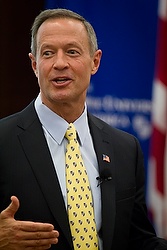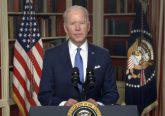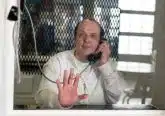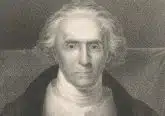Maryland governor commutes sentences of last four men on death row

By Catholic News Service
ANNAPOLIS, Md. — Maryland’s outgoing Gov. Martin O’Malley announced Dec. 31 he would commute the death sentences of the last four inmates on the state’s death row to life imprisonment without possibility of parole.
In 2013, Maryland’s General Assembly repealed capital punishment, but that did not affect the sentences of what at the time were five inmates on death row. One of those inmates, John Booth-El, died of natural causes earlier in 2014.
The state’s last execution was in 2005.
The action was lauded by the Maryland Catholic Conference, which has long advocated for the end of capital punishment.
O’Malley, a Catholic whose second term as governor ends Jan. 21, said in a statement that recent appeals and an opinion by outgoing Maryland Attorney General Doug Gansler have called into question the legality of carrying out those earlier death sentences.
“I have now met or spoken with many of the survivors of the victims of these brutal murders,” said O’Malley’s statement. “They are all good and decent people who have generously granted me the courtesy of discussing the cases of their individual family members.”
He said they “have borne their grief bravely along with the additional torment of an unending legal process. If endless death penalty appeals were to continue, these family members would, no doubt, persevere through that process with continued courage and fortitude.”
O’Malley added that the question at hand is “whether any public good is served by allowing these essentially unexecutable sentences to stand. In my judgment, leaving these death sentences in place does not serve the public good of the people of Maryland — present or future.”
Leaving the sentences in place would, he added, “needlessly and callously subject survivors, and the people of Maryland, to the ordeal of an endless appeals process, with unpredictable twists and turns, and without any hope of finality or closure.”
He said “there is one truth that stands between and before all of us … few of us would ever wish for our children or grandchildren to kill another human being or to take part in the killing of another human being.”
O’Malley added that he hopes the commutations “might bring about a greater degree of closure for all of the survivors and their families.”
Mary Ellen Russell of the Maryland Catholic Conference told Catholic News Service that O’Malley’s announcement was not unexpected after Gansler’s November opinion said that, under current law, there was no way to issue regulations for how to execute the remaining inmates.
“It’s a wonderful way to start the new year,” she said, adding that it brings an end to “a lengthy and heart-rending” process of reviewing and ending capital punishment in the state.
Instead, Russell said, the Catholic Conference and others interested in the workings of the criminal justice system can now focus on other issues, specifically restorative justice.
Russell said it seems unlikely that incoming Gov. Larry Hogan, who also is Catholic, would press to reinstate the death penalty, and “there’s clearly no appetite for it in the General Assembly.” O’Malley is a Democrat and Hogan a Republican.
O’Malley’s two immediate predecessors each authorized two executions. In 2002, Gov. Parris Glendening ordered a moratorium while a study of capital punishment was conducted. It found racial and geographic disparities in how the state applied capital punishment.
His successor, Gov. Robert Ehrlich, reinstated capital punishment and resumed executions, authorizing one in 2004 and one in 2005. In 2006 a state Appeals Court ordered the suspension of executions because of legal problems with the protocol for lethal injection.













